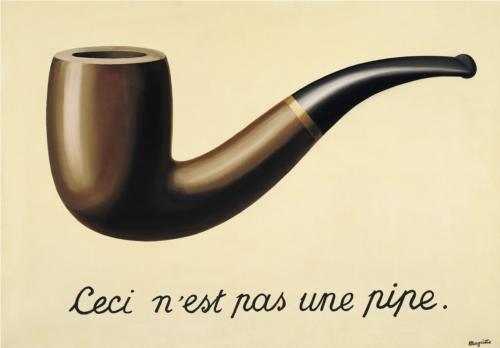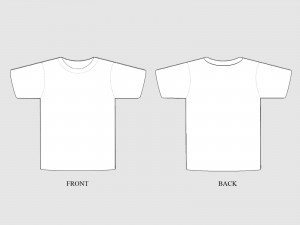Let us pause for a moment and consider a shirt. Does this:
represent a reinterpretation or a misunderstanding of Magritte’s painting?
If the designer is making a statement about the classic definition of the T-shirt (a shirt with sleeves that make a T shape when laid out flat),
then, despite being made out of the sort of fabric we customarily associate with T-shirts, this garment with its flutter sleeves has fooled us, and brings us up short. “Ah ha!” says the shirt, “Think again about what you think you know!”
On the other hand, is the alteration of sleeves sufficient to catapult this top into an entirely different category of shirt-ness, or is it, in fact, stuck in T-shirthood despite its aspirations? Is the proclamation “Ceci n’est pas un T-shirt” a defiant cry, “I AM NOT LIKE THOSE OTHER SHIRTS!” or is it only the failed attempt of a two-bit radical poseur?
And finally, is it possible that this shirt is only the symbolic representation of a T-shirt? Could it be an illusion? And if so, how will we know that the emperor has no clothes?





Is it not curious how our definition of “t-shirt” has expanded to include for the most part almost any casual pull-over-the-head knit shirt (as opposed to one which buttons or zips closed)? I would say this is not a t-shirt. I also would not buy it or wear it. But I might buy and wear an authentic t-shirt which had a reproduction of Magritte’s not-a-pipe screenprinted on the front.